[instagram-feed]
Category: Film Photography
Gallery: Gualdo Tadino (2003)
On a quick trip to central Italy during the fall of 2003, we travelled to the Umbrian town of Gualdo Tadino (pop. @ 15,000). In the region of Umbria, Germanic influence was significant. The dual name for the town reflects this. “Gualdo” derives from the German “wald” for “forest.” “Tadino” refers to the old Roman town of “Tadinum.” From 996, the town was called “Gualdo.” Later, in 1833, Pope Gregory XVI re-added the Roman “Tadino” portion of the city’s name. Our Italian side’s family village, Gaifana, is just about 8km down the famous Roman Road, Via Flaminia, originally built in the 3rd century BCE, stretching from Rome to Rimini.
From the 6th until the mid-14th century, Gualdo Tadino existed as part of the Lombardic Duchy of Spoleto. The Lombards were a Germanic people who had invaded Italy in the late 6th century. In the mid-14th century, Umbria became part of the Papal States. For the next several hundred years, the population of Umbria waffled between loyalties to the Vatican or to the Holy Roman Empire before ultimately being annexed by the modern state of Italy in 1860. Today, along with other towns in Umbria, Gualdo Tadino is known for its ceramics.
Every fall, in a tradition started around 1970, the people of Gualdo Tadino host a three-day festival called “Giochi de le Porte” (or “the Games of the Gates”), dedicated to St. Michael the Archangel, pitting teams from neighborhoods of the four principal town gates against each other in medieval games — including a cart race, a donkey race, slingshot and archery competitions. Each team wears a different colored handkerchief to signify their gate. Day one starts with the “opening of the taverns” where the town inhabitants gather to eat and imbibe, and the traditional exchange of gifts between different teams. At the end of the races, the winning team has the honor of burning an effigy of Bastola, a reputed witch accused of destroying the town by fire in 1237.
The event is quite spectacular with what seems like the entire town turning out for each phase of the festival. It is certainly a part of Italy where a knowledge of Italian is essential.
Here are a few snaps of the festival taken with a 1968 Konica Autoreflex T on Kodak Portra film.
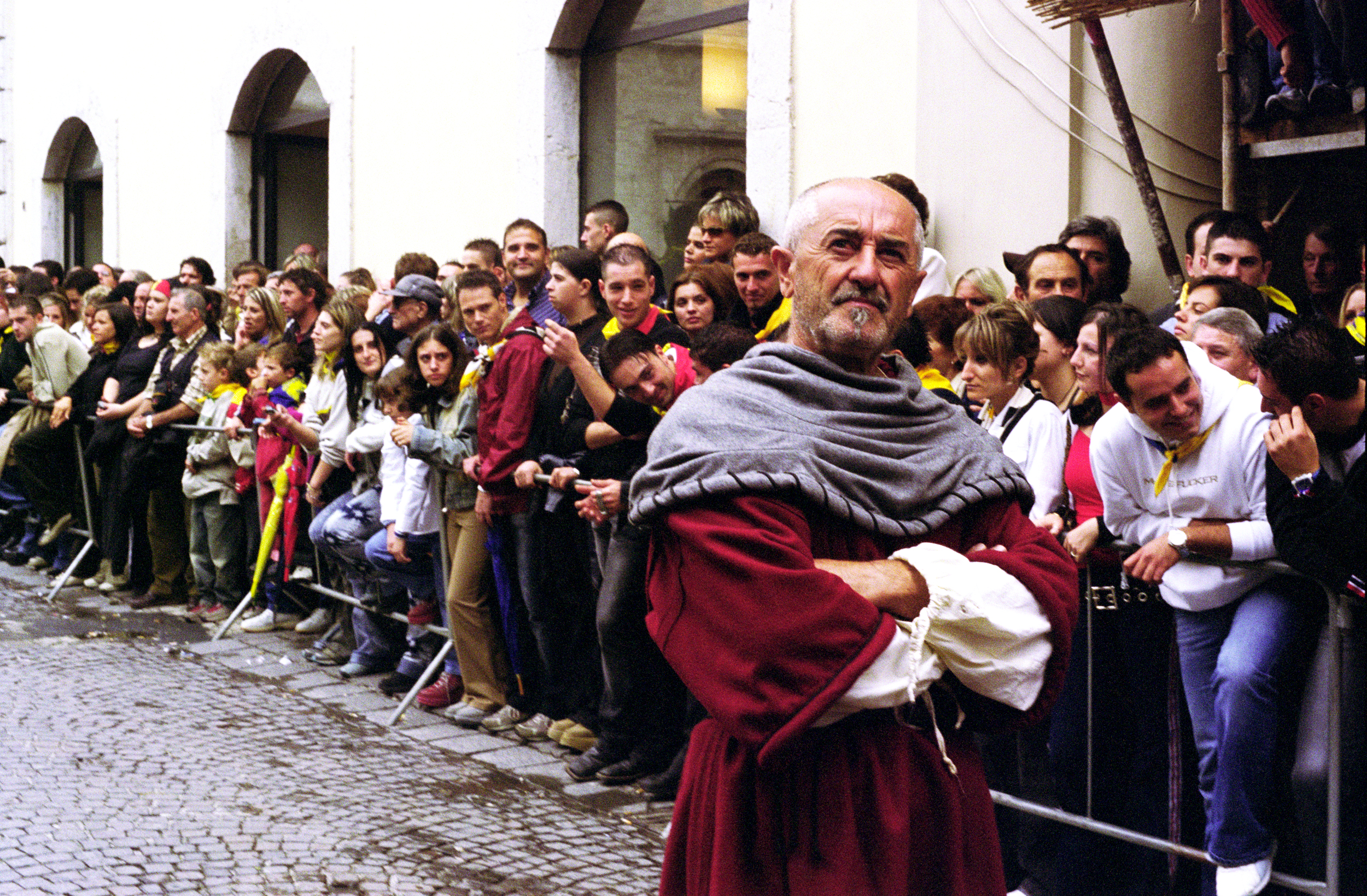
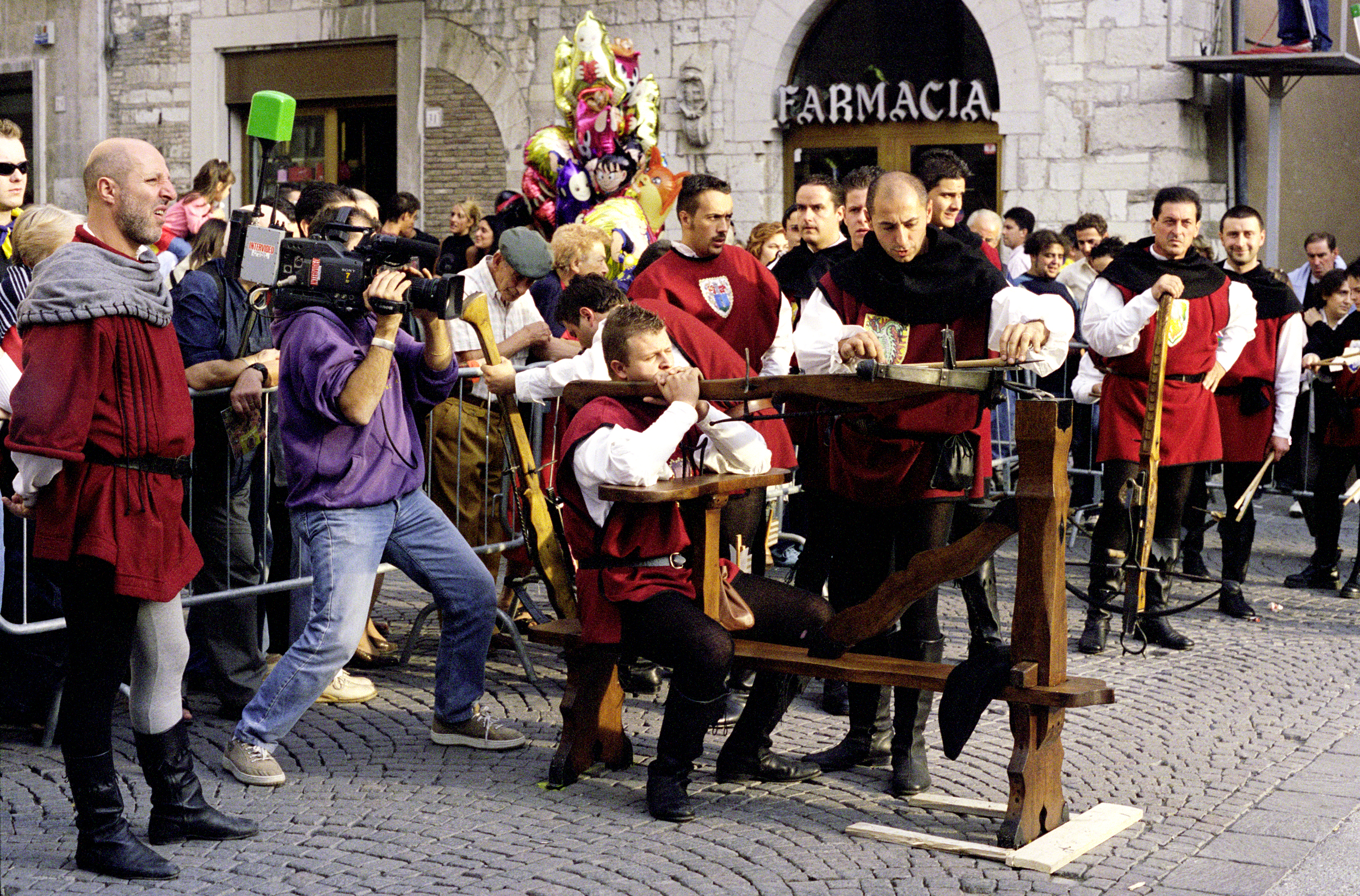
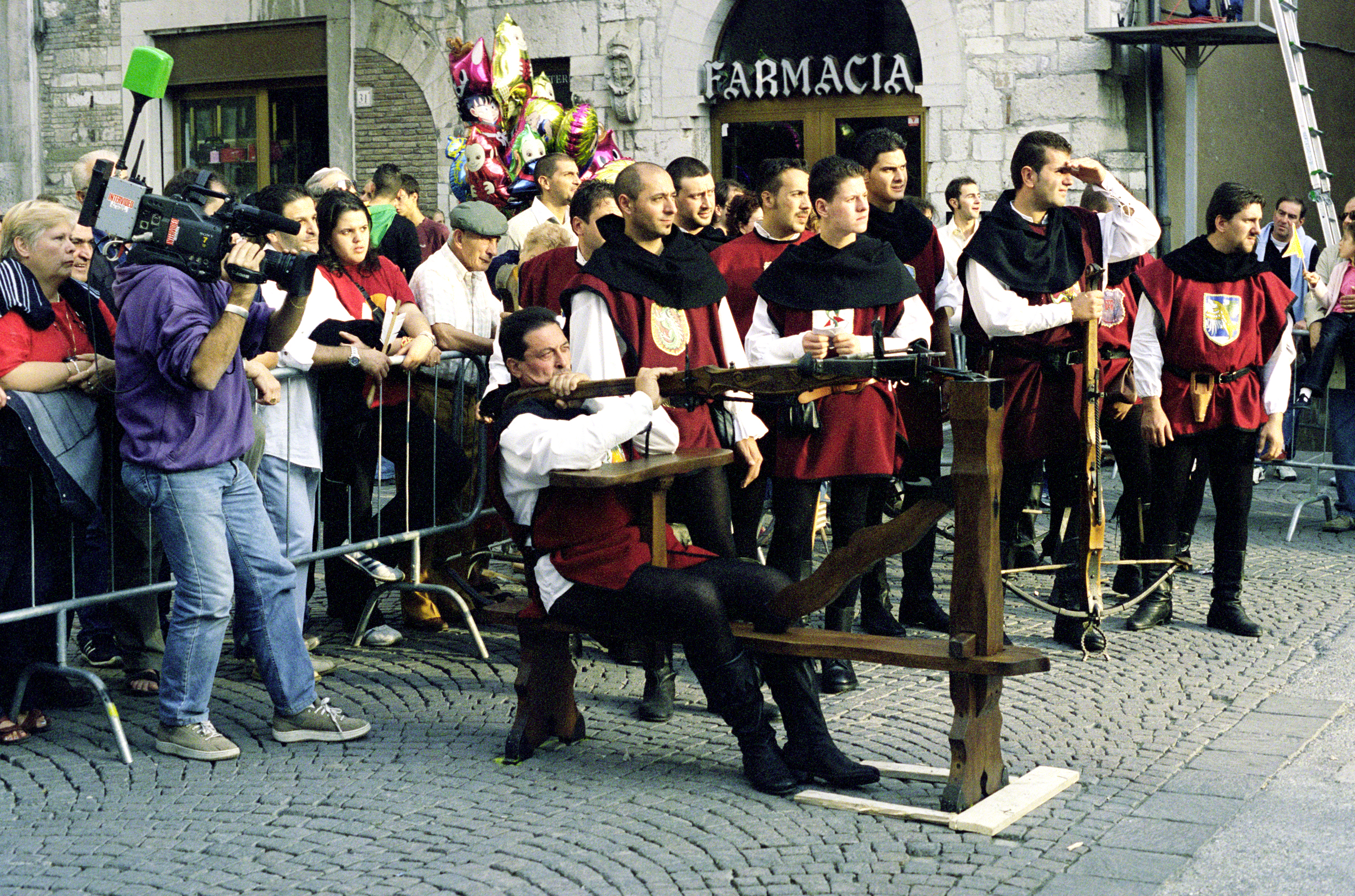
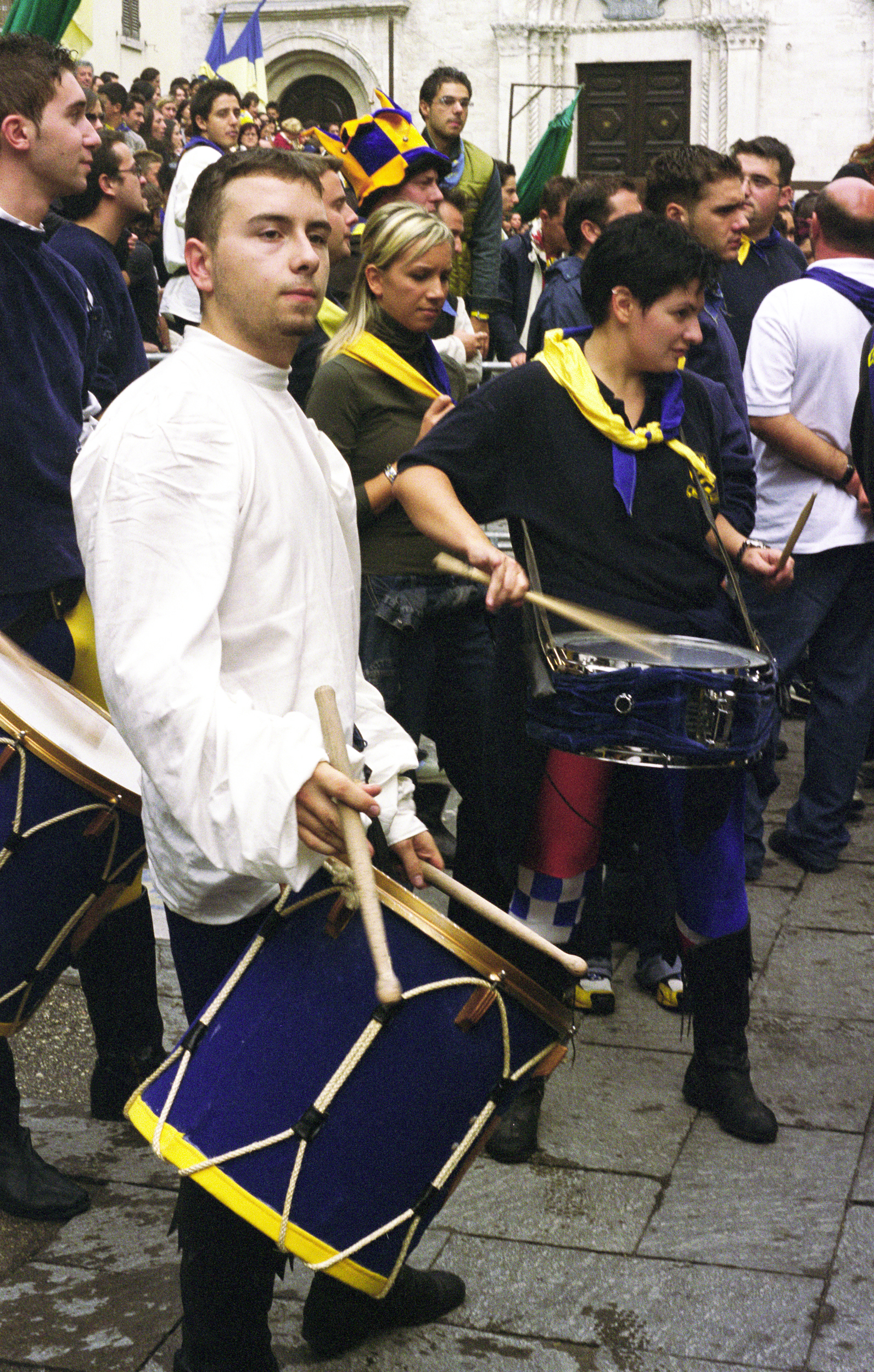
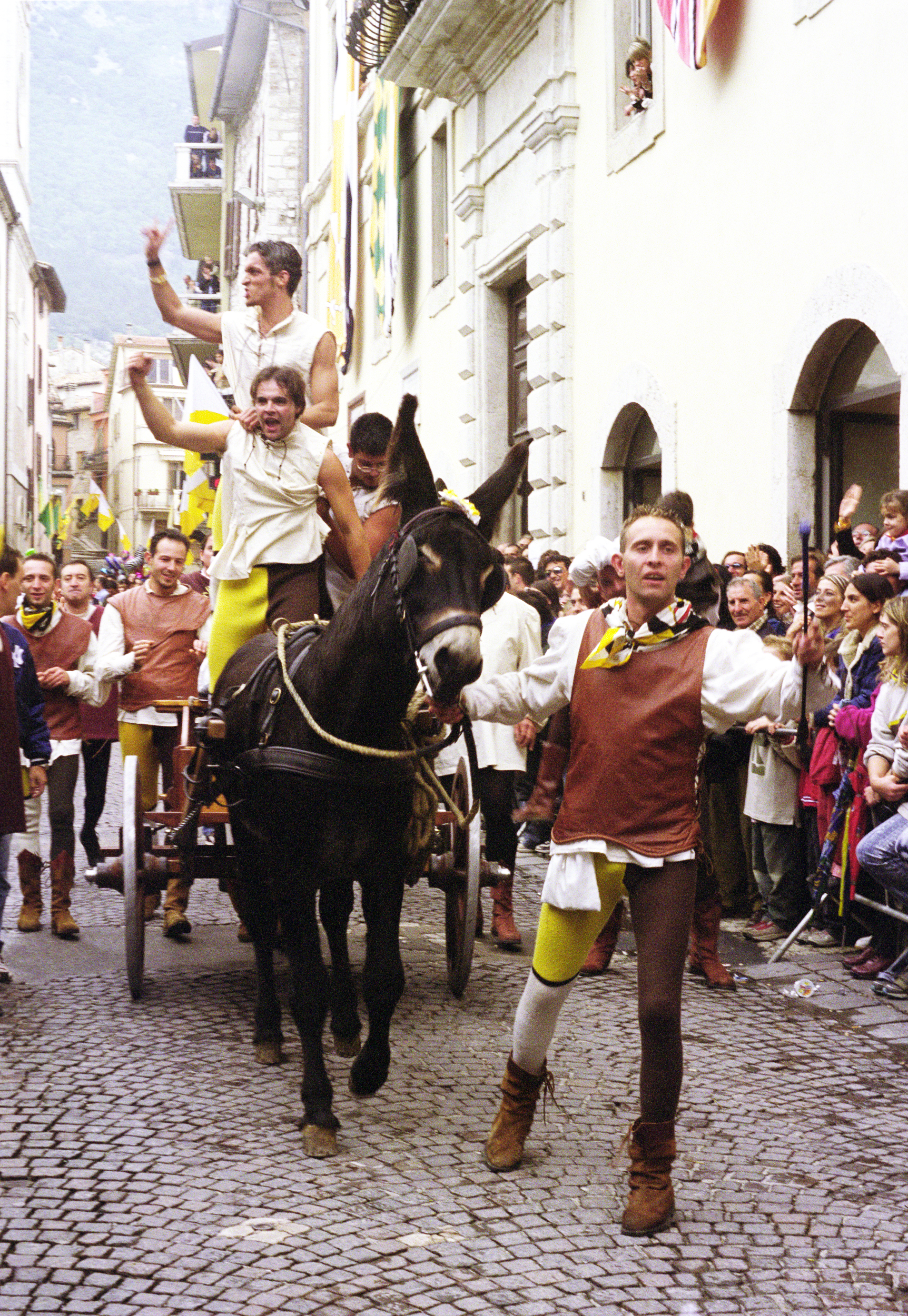
A poignant War Memorial in the family village of Gaifana

Gallery: Detroit (2003 – 2008)
On July 22, 2001, during the 300th anniversary celebrations of the founding of the City of Detroit, an article appeared that flipped the traditional narrative of the city’s origins. In the 20th century, every southeastern Michigan school kid was taught that Detroit was founded by an individual named Antoine de la Mothe Cadillac, a French aristocrat from southern France. In the illustrations in the textbooks, Cadillac, dressed in a Three Musketeers ensemble, replete with a tricorne hat, disembarks from a French naval vassal with red and blue flags emblazoned golden fleurs-de-lis, firmly planting it on some part of the modern riverfront.
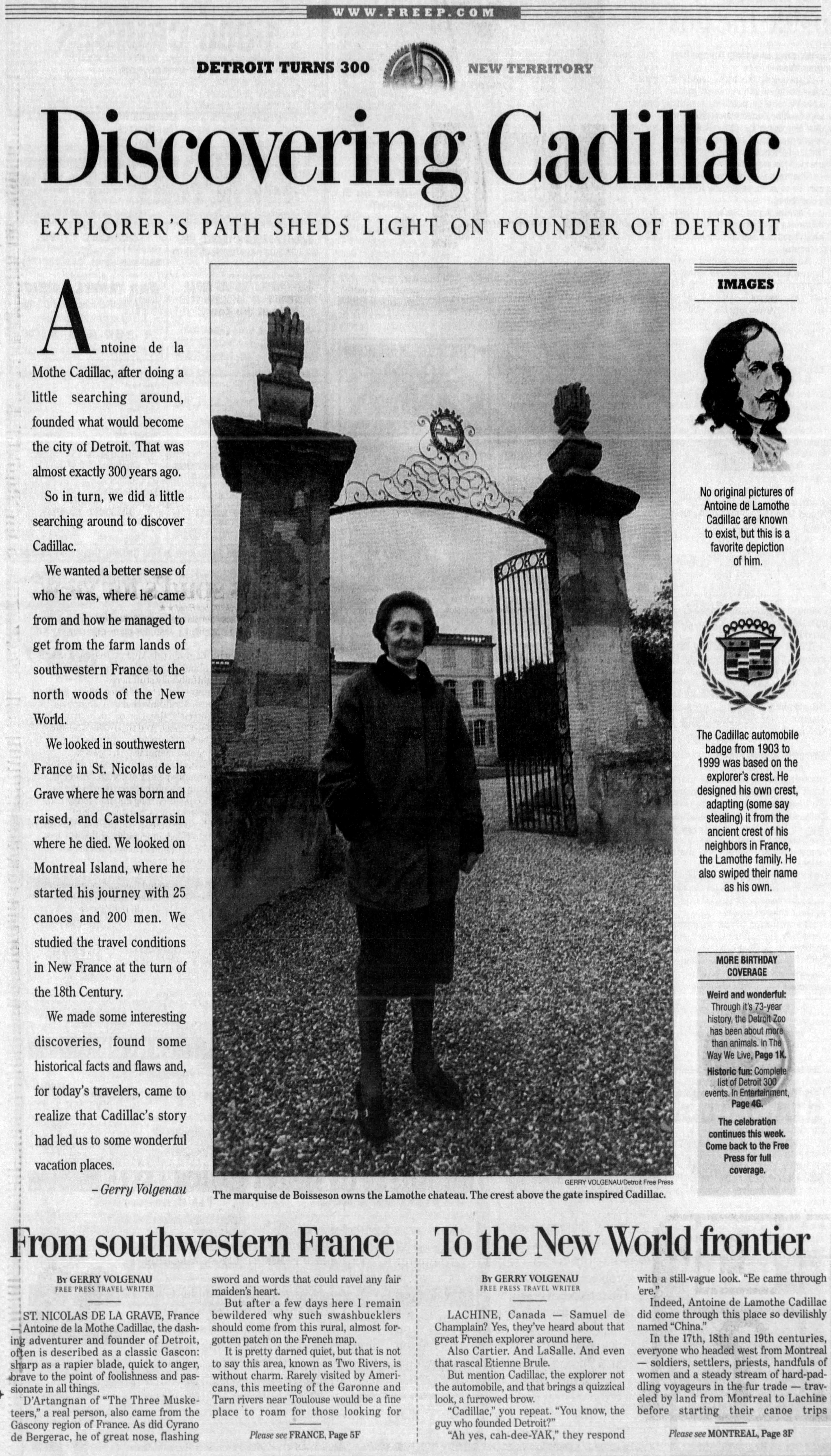
But the well-researched article pointed out that Cadillac was no aristocrat and no hero. Cadillac was born the son of a provincial judge in 1658 in Gascony. Arriving in the New World in 1683, he re-invented himself as a French nobleman, swiping the “de la Mothe” name from a local chateau near his hometown. Cadillac then lied to the Governor of Montreal about his origins. He made a fortune selling liquor and firearms to Native Americans. Once the leader of the Detroit settlement, he sold the government offices to friends and family. He hated Native Americans, Jews, and Jesuits. After a brief stint in New Orleans starting in 1713, he returned to France 1717, where he was promptly thrown in La Bastille from crimes against le royaume. After being released in 1718, he lived out his life in France, dying in 1730. Canadian historians remain baffled by Detroit’s admiration for the figure, deeming him “one of the worst scoundrels ever to set foot in New France.”
Fast forward 301 years to 2002. That year, Detroit elected the young, charismatic, larger-than-life Kwame Kilpatrick as Mayor. After decades of mismanagement, stagnation, decay, the City appeared to be again on the move. During the late 90s and early 2000s, a new influx of young people began to settle within the Grand Boulevard Arc (the historic core of the City). While those neighborhoods witnessed a small spike in revitalization and interest, the remaining 80% of the City struggled to stabilize and endure. The 2000 to 2008 period, for better or for worse, and purposefully or not, laid the groundwork for the incredible “gentrification” or “revitalization” (answer depending upon whom you ask) of the neighborhoods within the Grand Boulevard Arc.
Without the benefit of enough hindsight, it is difficult to say whether in that particular part of Detroit, a mini Renaissance had occurred — probably because we often mix up the joy of being young with the joy of being in a particular place at a particular time. Needless to say, with residential and commercial rents being cheap and crime being relatively low (yet still existing), more things became possible for a particular group of people.
It was definitely a good time to be in school, which I was between 2003 and 2006. At the time, I had a Nikon F4 and a Konica Hexar RF, until both of them were stolen in an apartment break-in during the mid-2000s.
Twilight of the Decay
Unlike many cities around the world, Detroit failed at preserving its past. Indeed, it probably can be said that Detroit made a conscience effort to destroy it. Starting in the 1950s, the City began demolishing much of its remaining downtown Victorian and early-20th century government and commercial buildings, replacing them mostly with empty lots. This destruction continued unabated, and undeterred by strong protests from preservationists, through the mid-2000s, with perfectly mothball-able buildings being torn down and replaced with nothing.
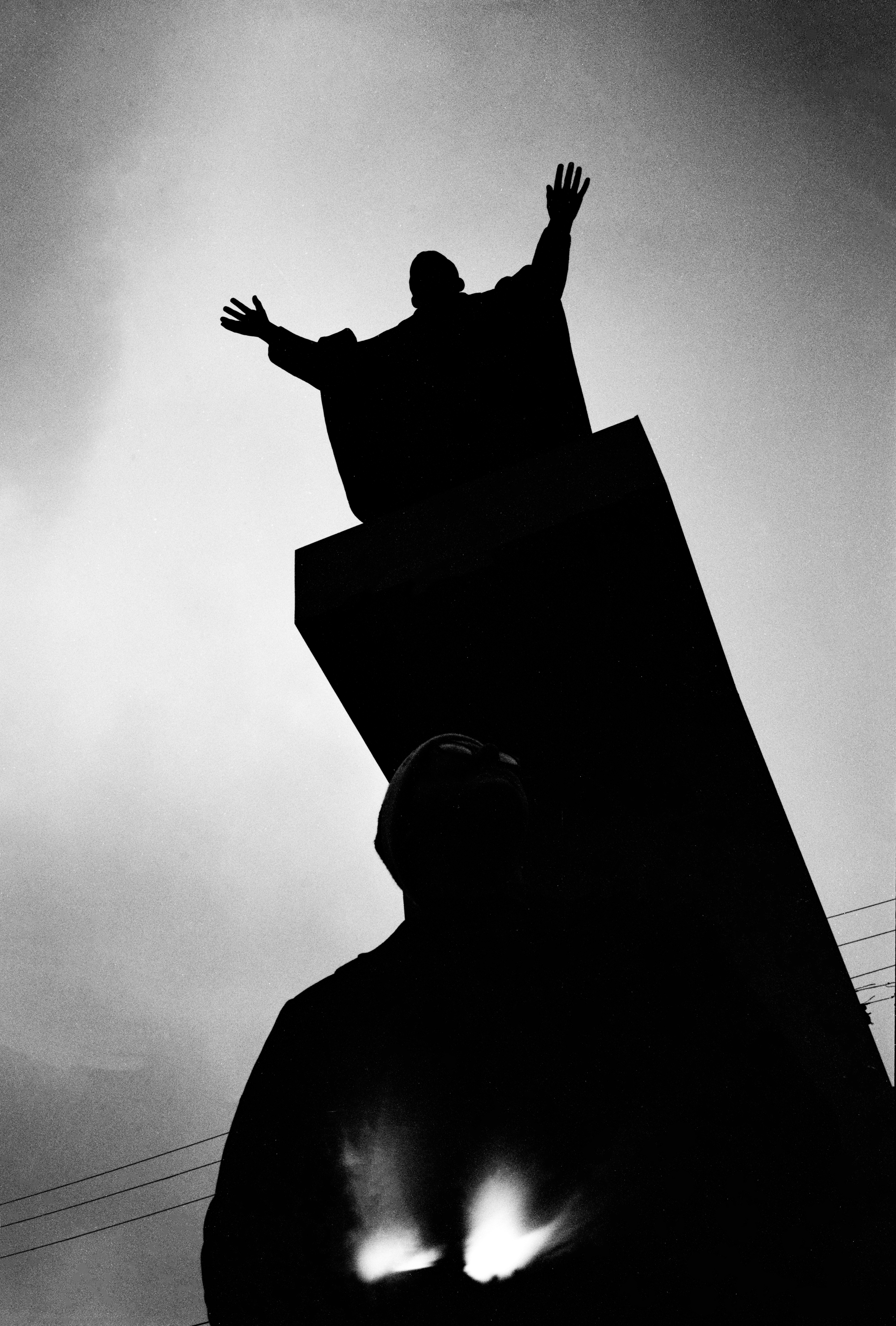
Statue of Pope John Paul II in Hamtramck
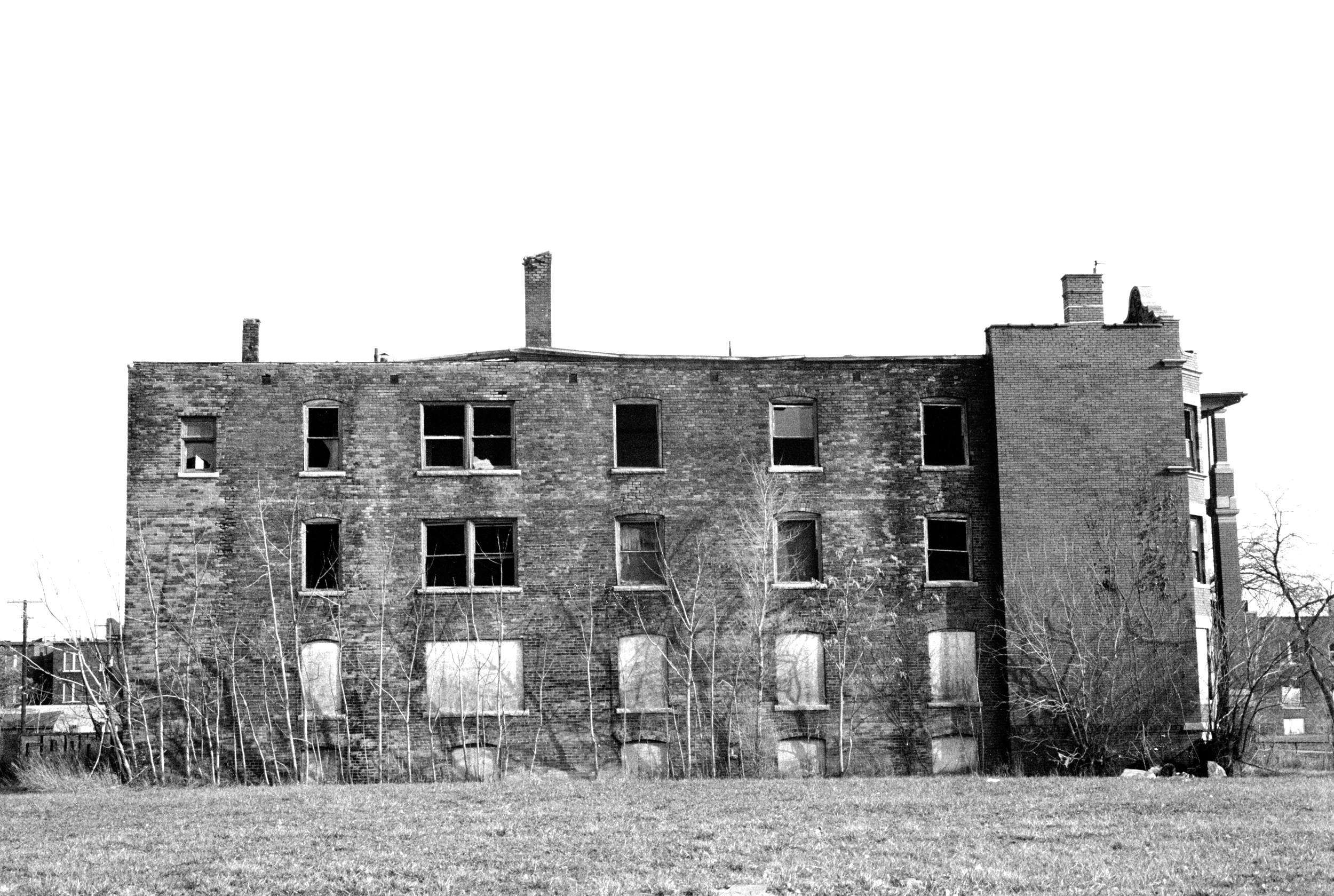
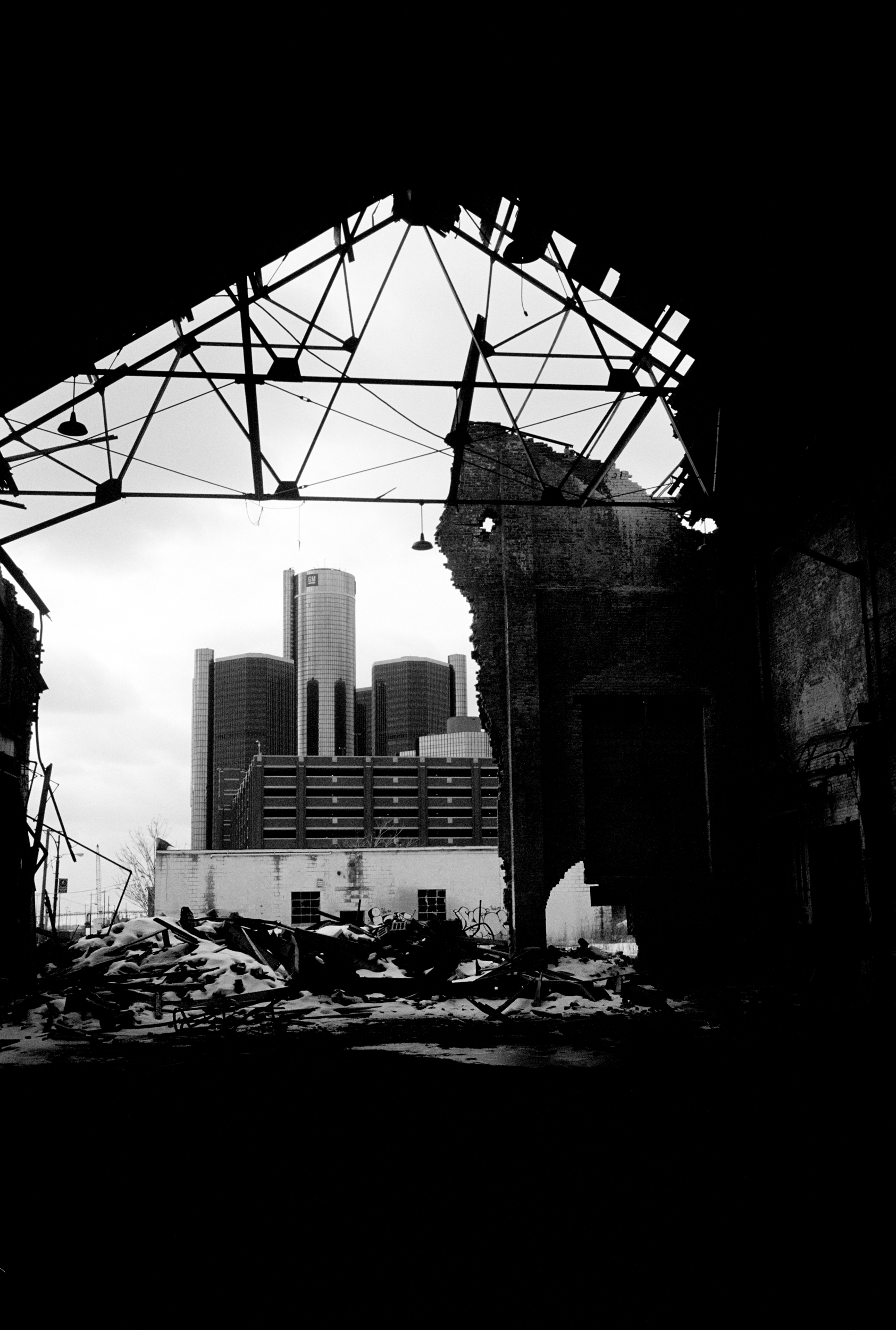
General Motors Headquarters Seen From a Derelict Warehouse
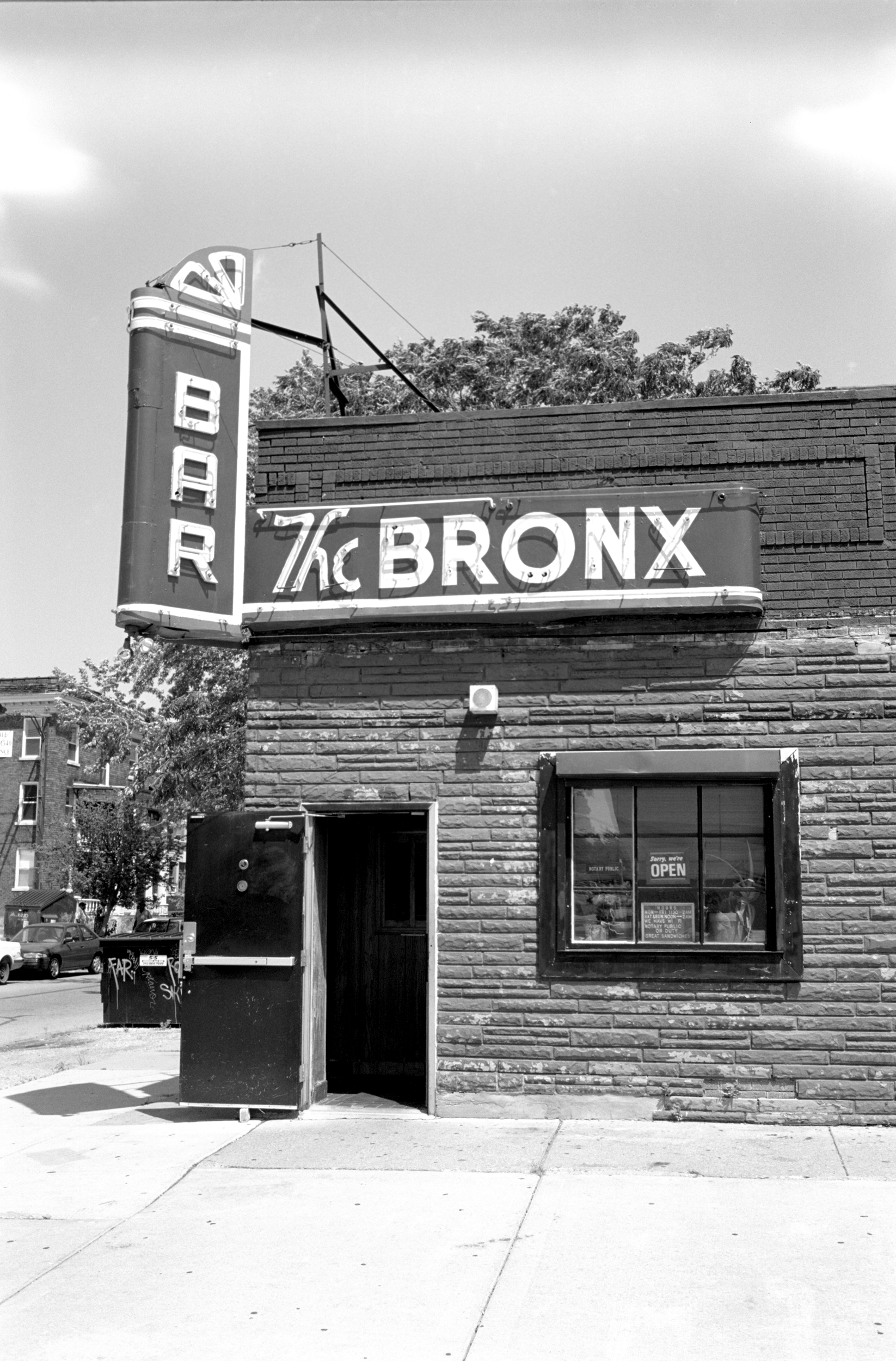
The Iconic Bronx Bar in 2006
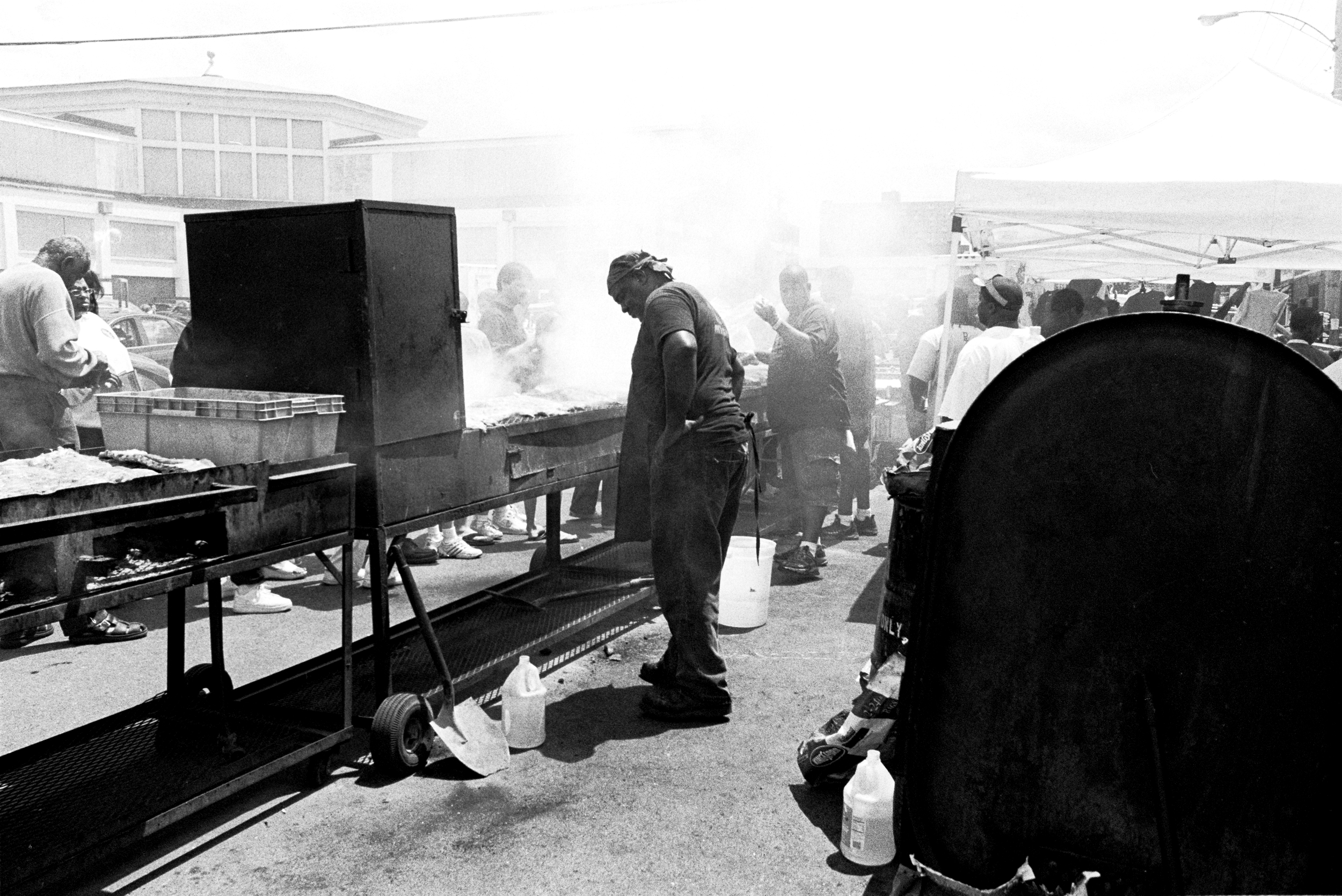
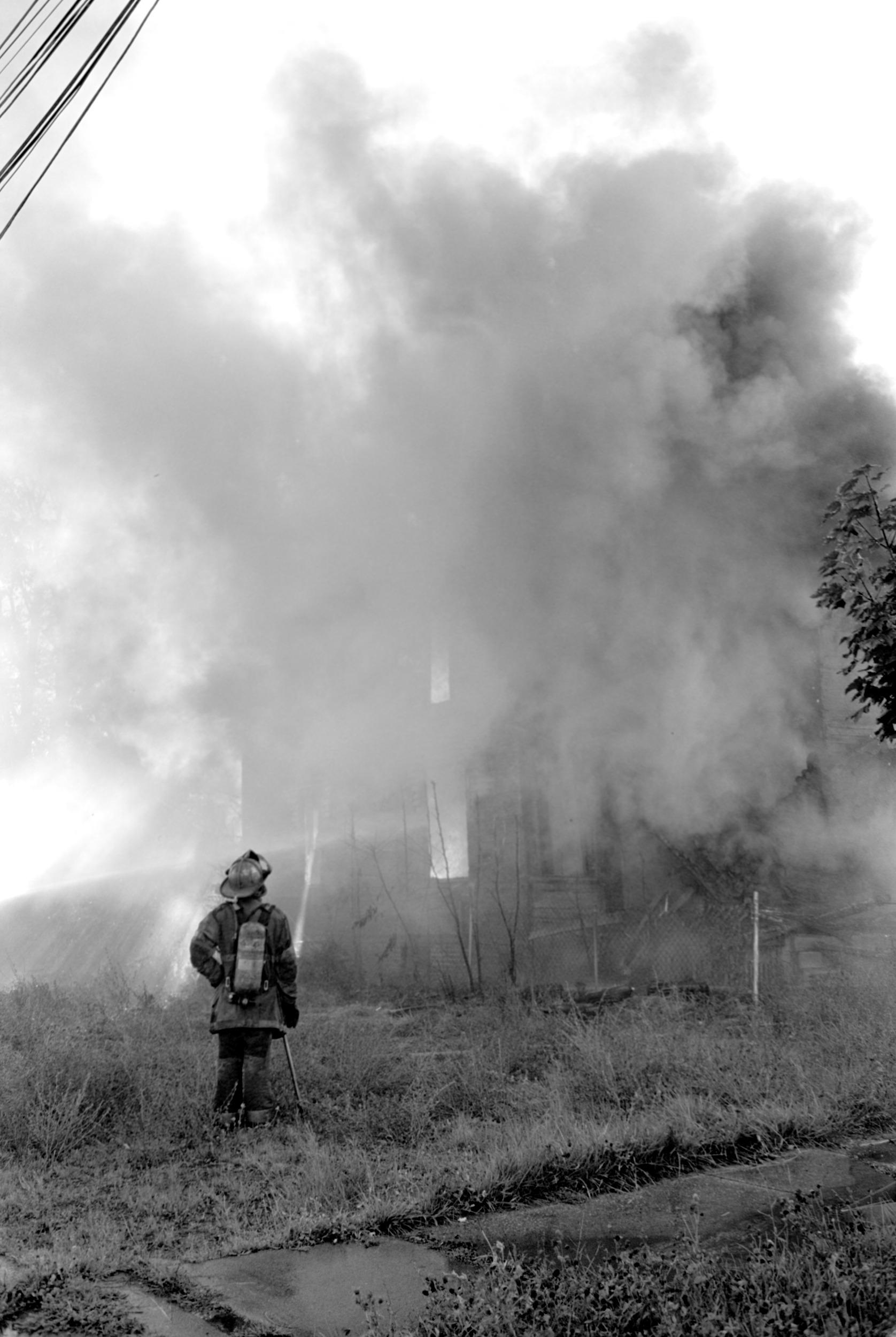
Detroit Firefighters Combat Another Blaze in the Cass Corridor in 2006
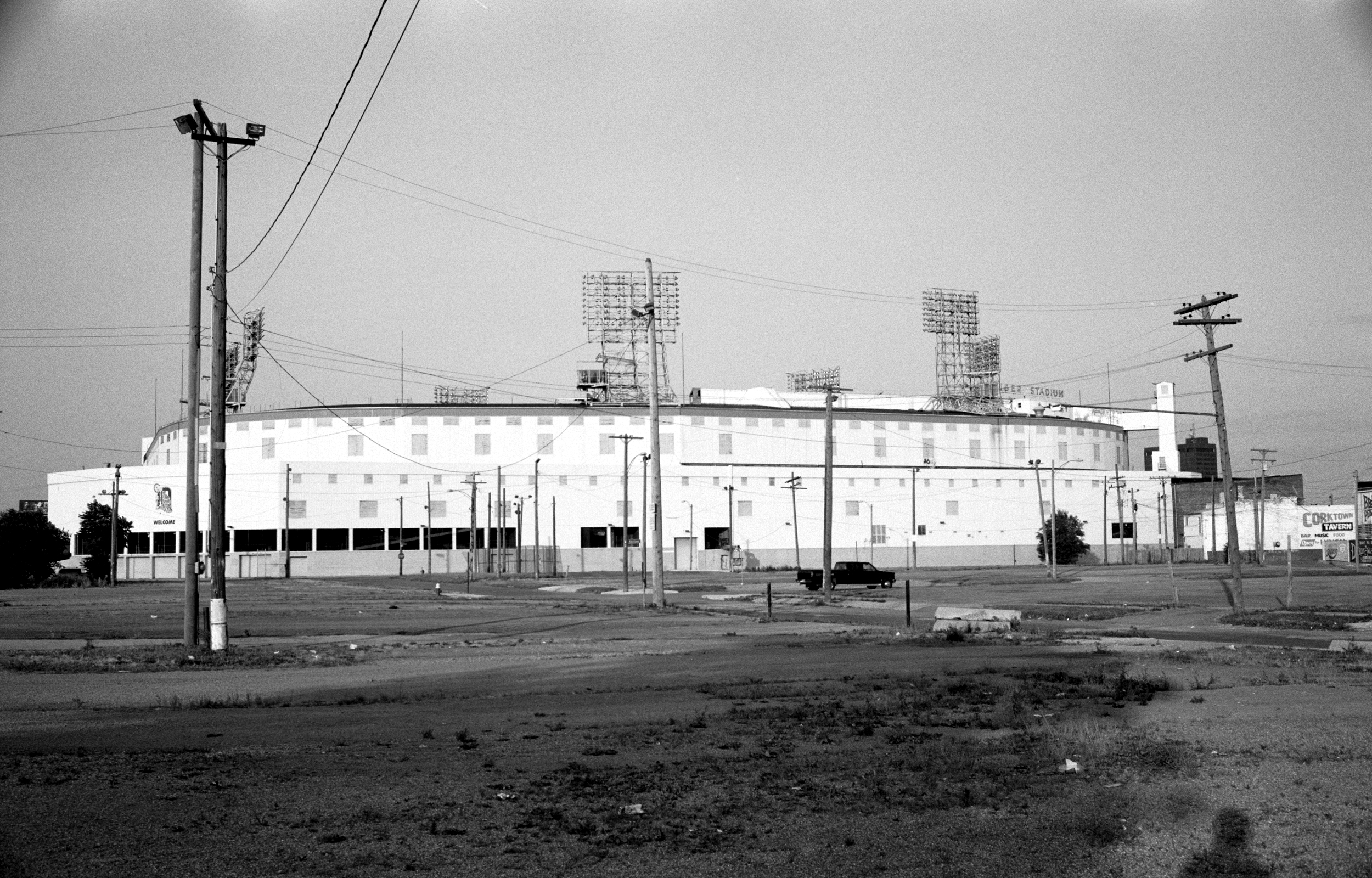
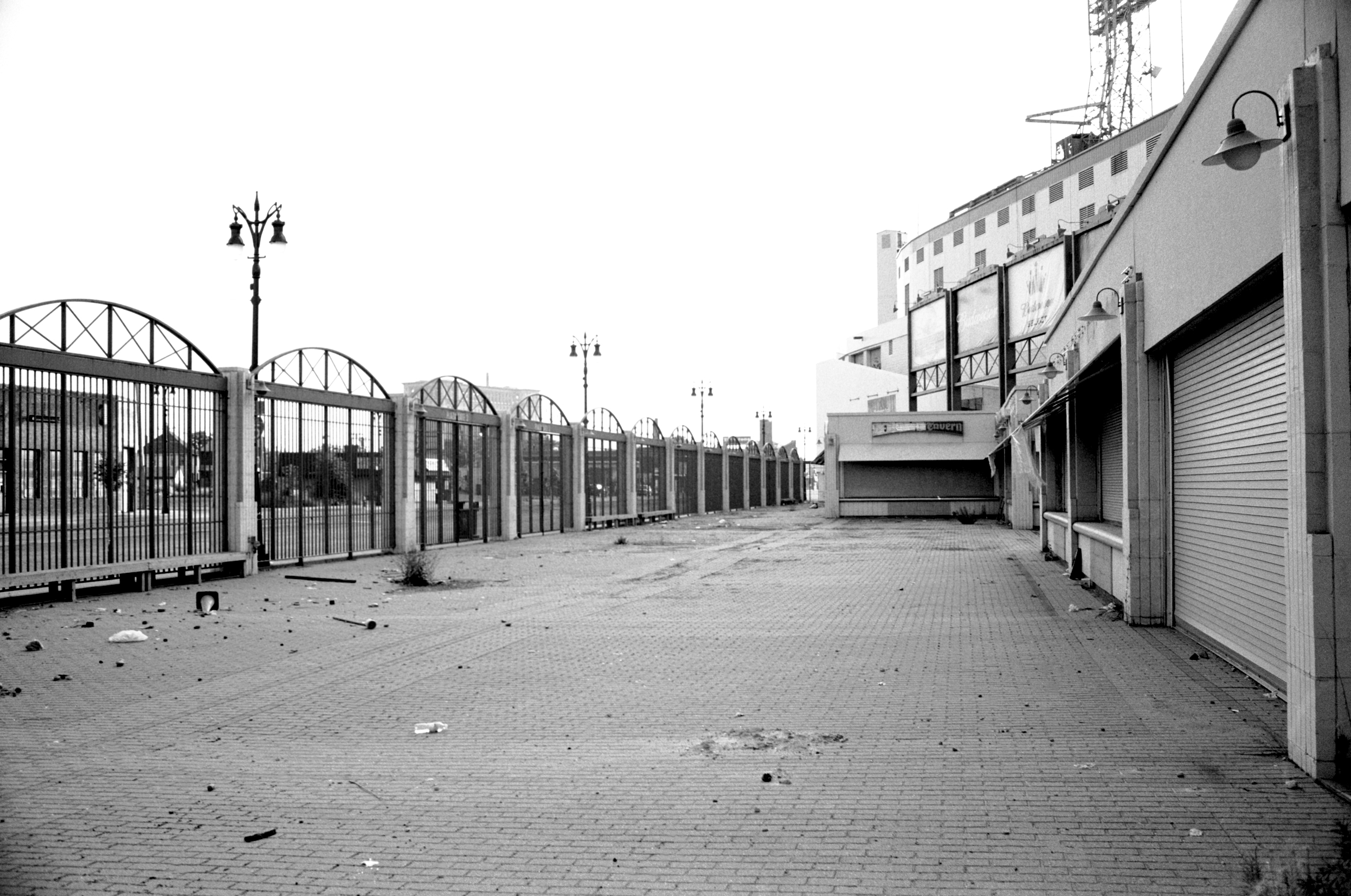
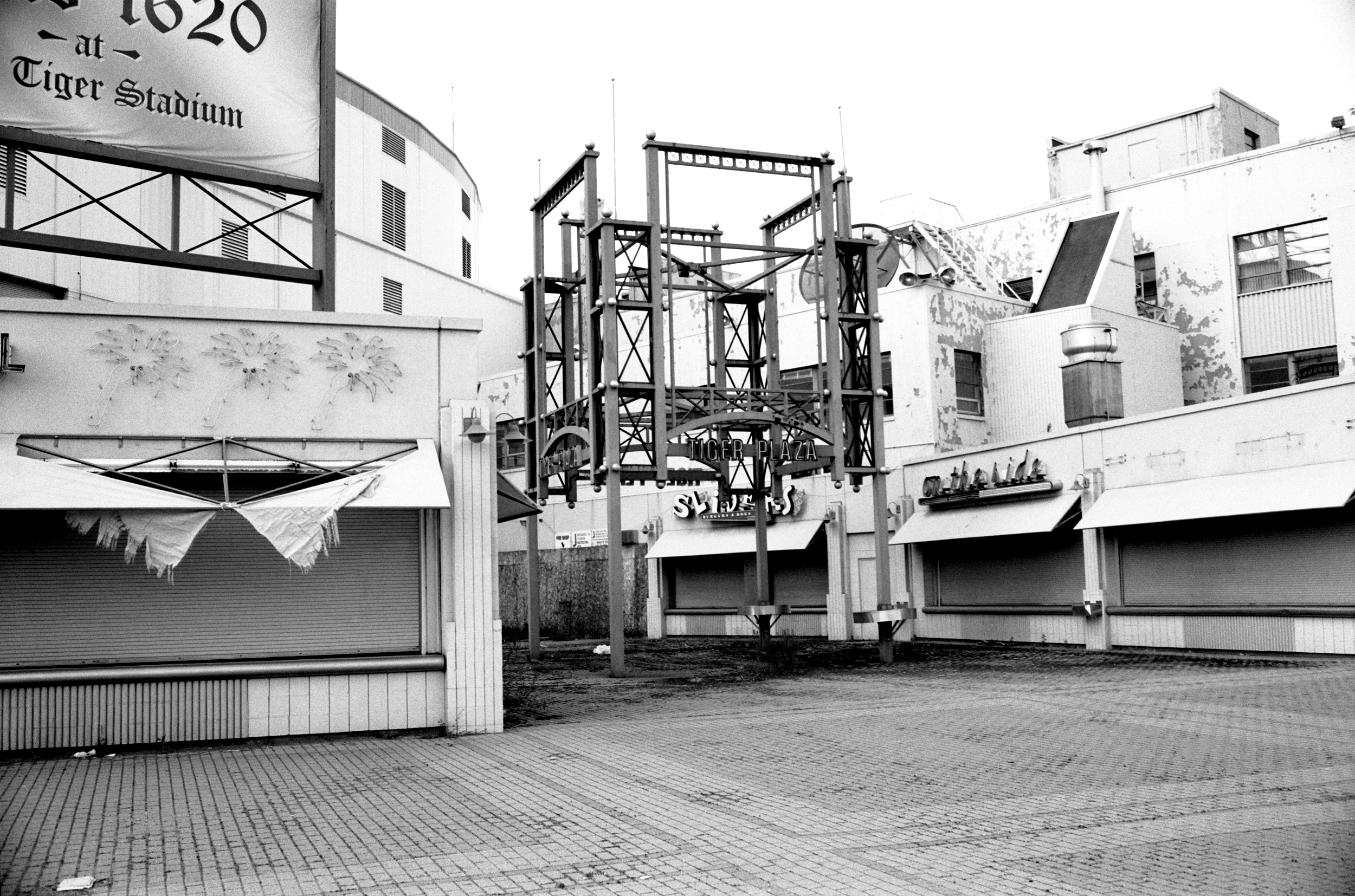
Tiger Stadium (1912), Sitting Derelict Here in 2007; Torn Down in 2008
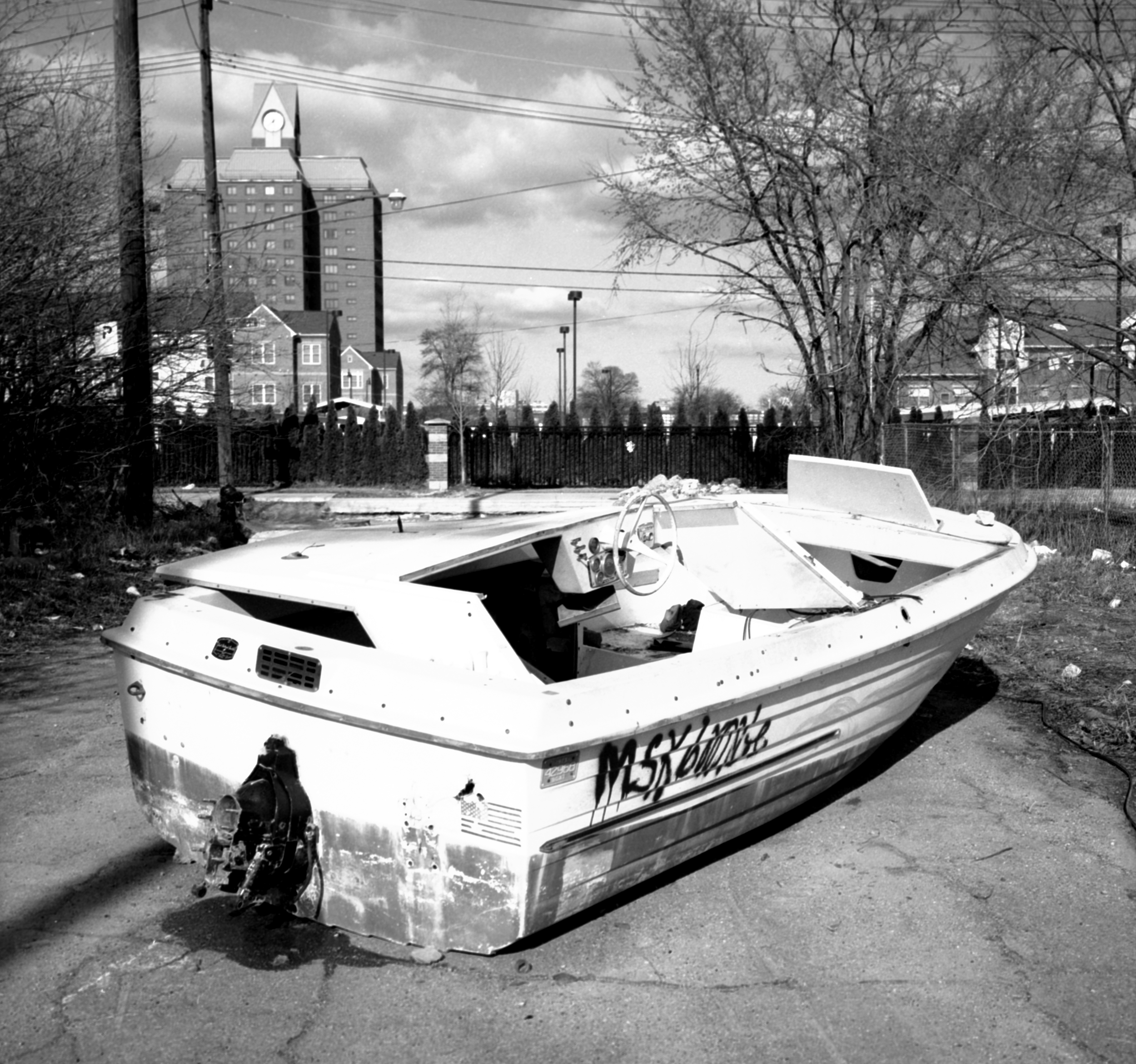
Abandoned Boat in a Woodbridge Alley
February 2003 Downtown War Protest
On an extremely cold day in February 2003, U.S. House Representatives John Conyers, Jr. and David Bonior assisted in the organization of an anti-Iraq War protest. The turnout was phenomenal.


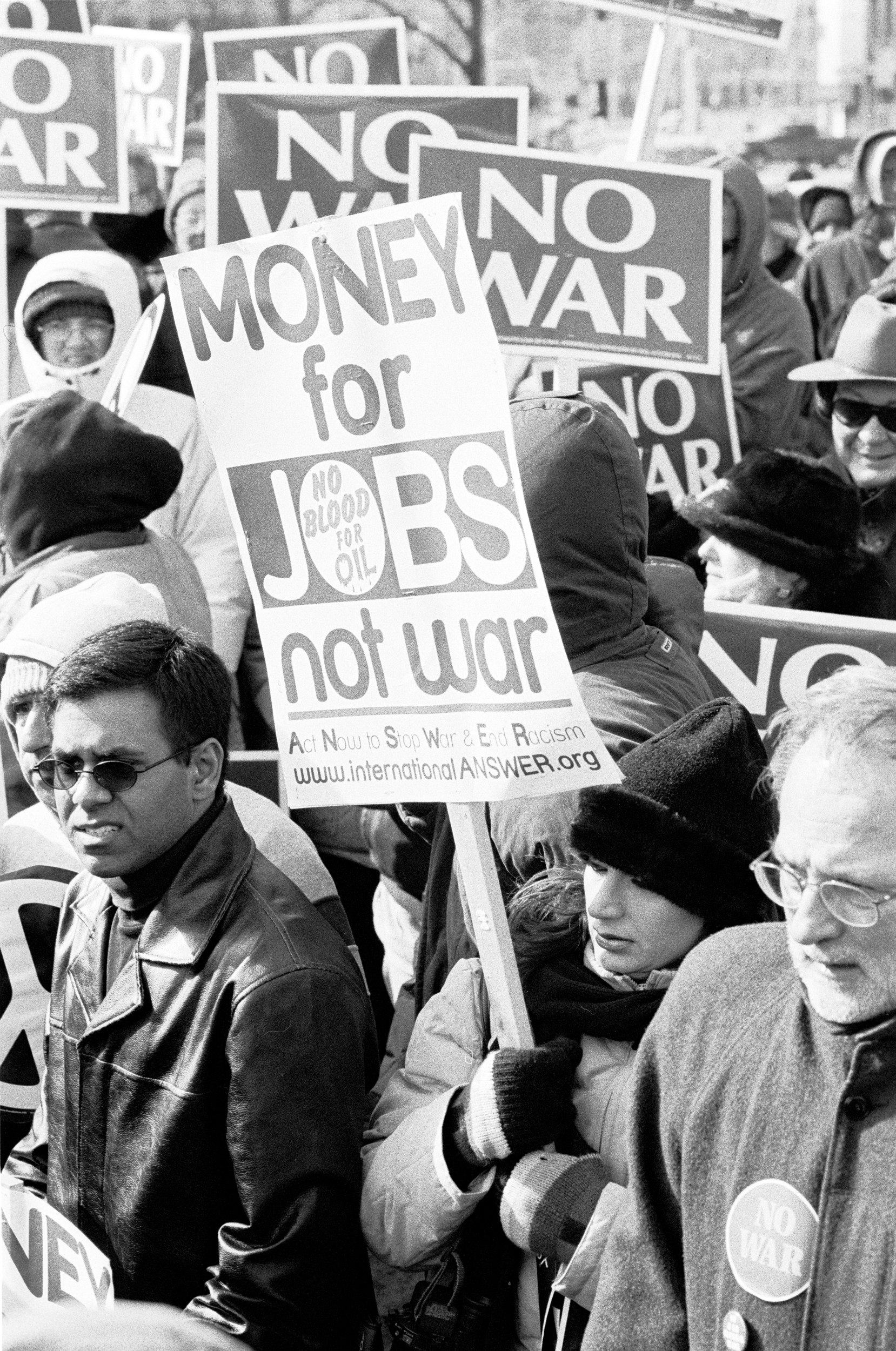
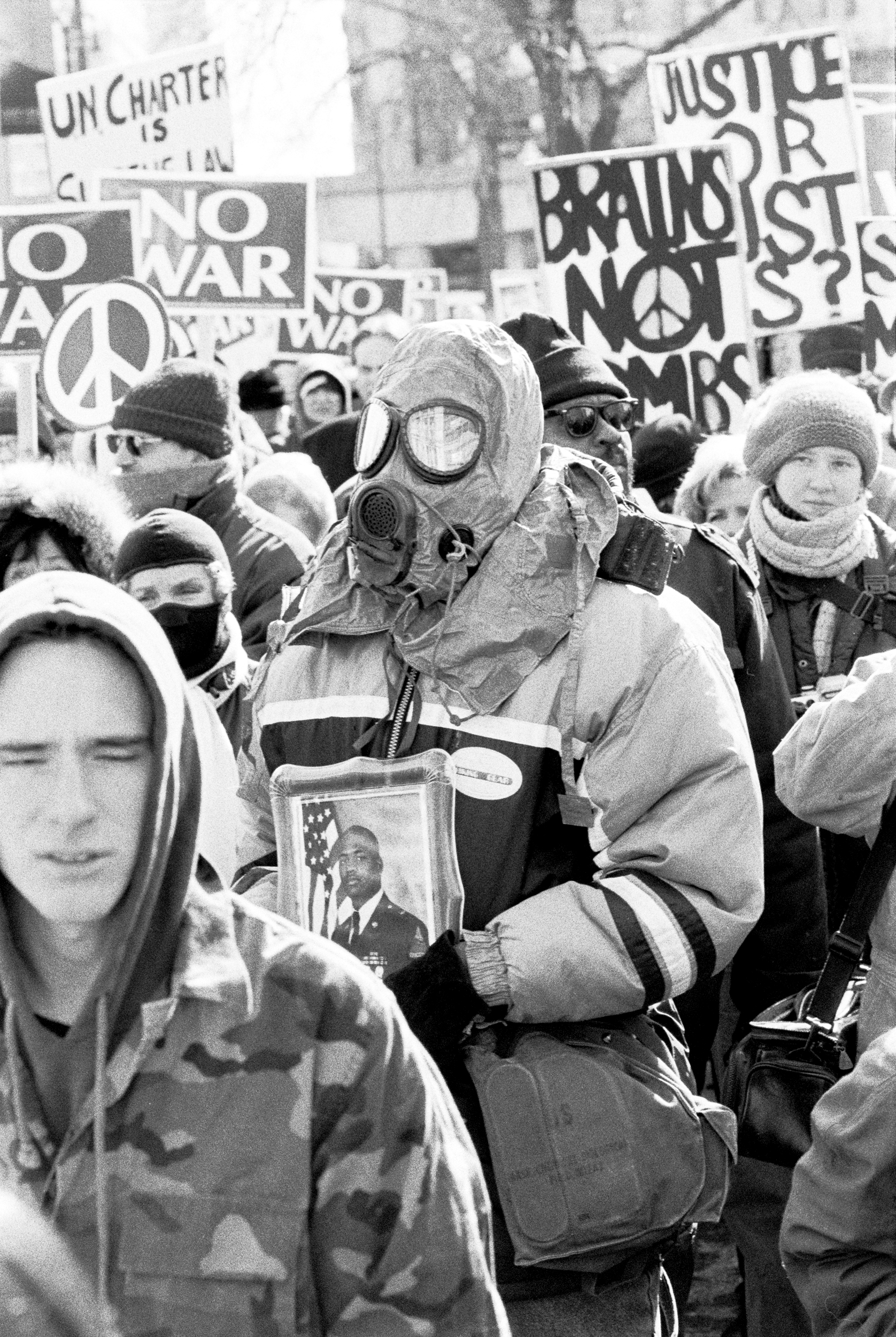

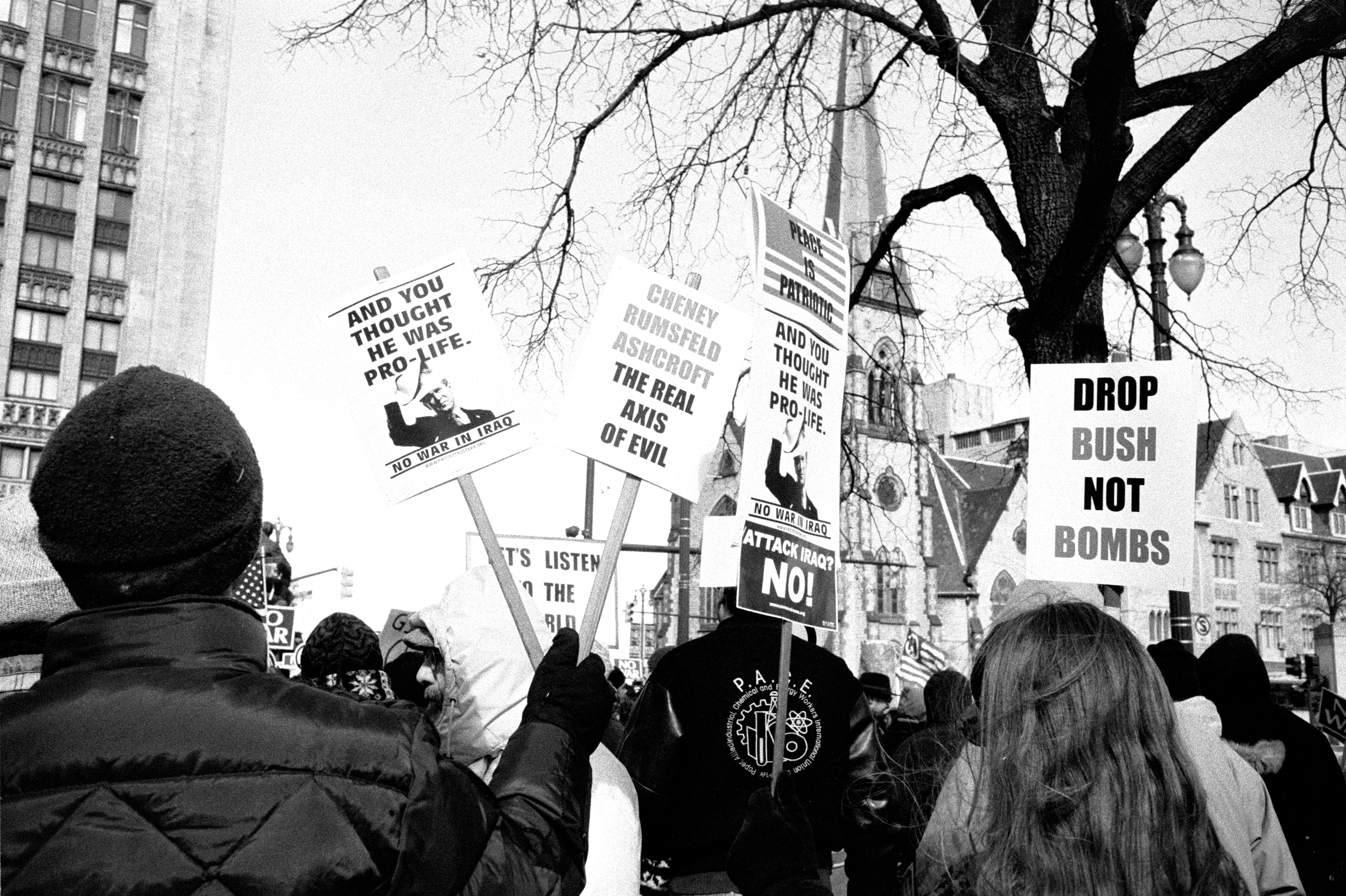
2004 Cinco de Mayo Parade, Southwest Detroit
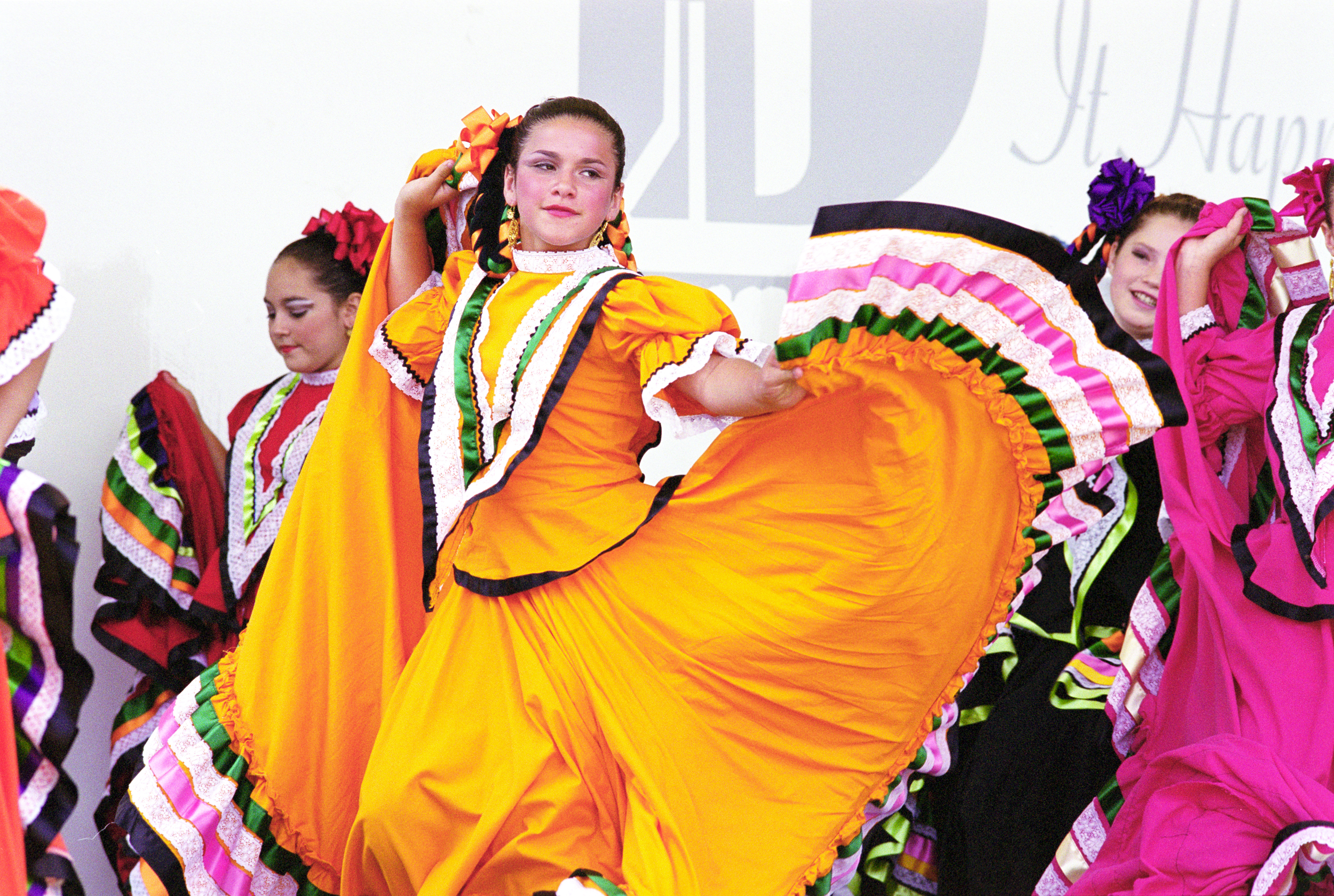
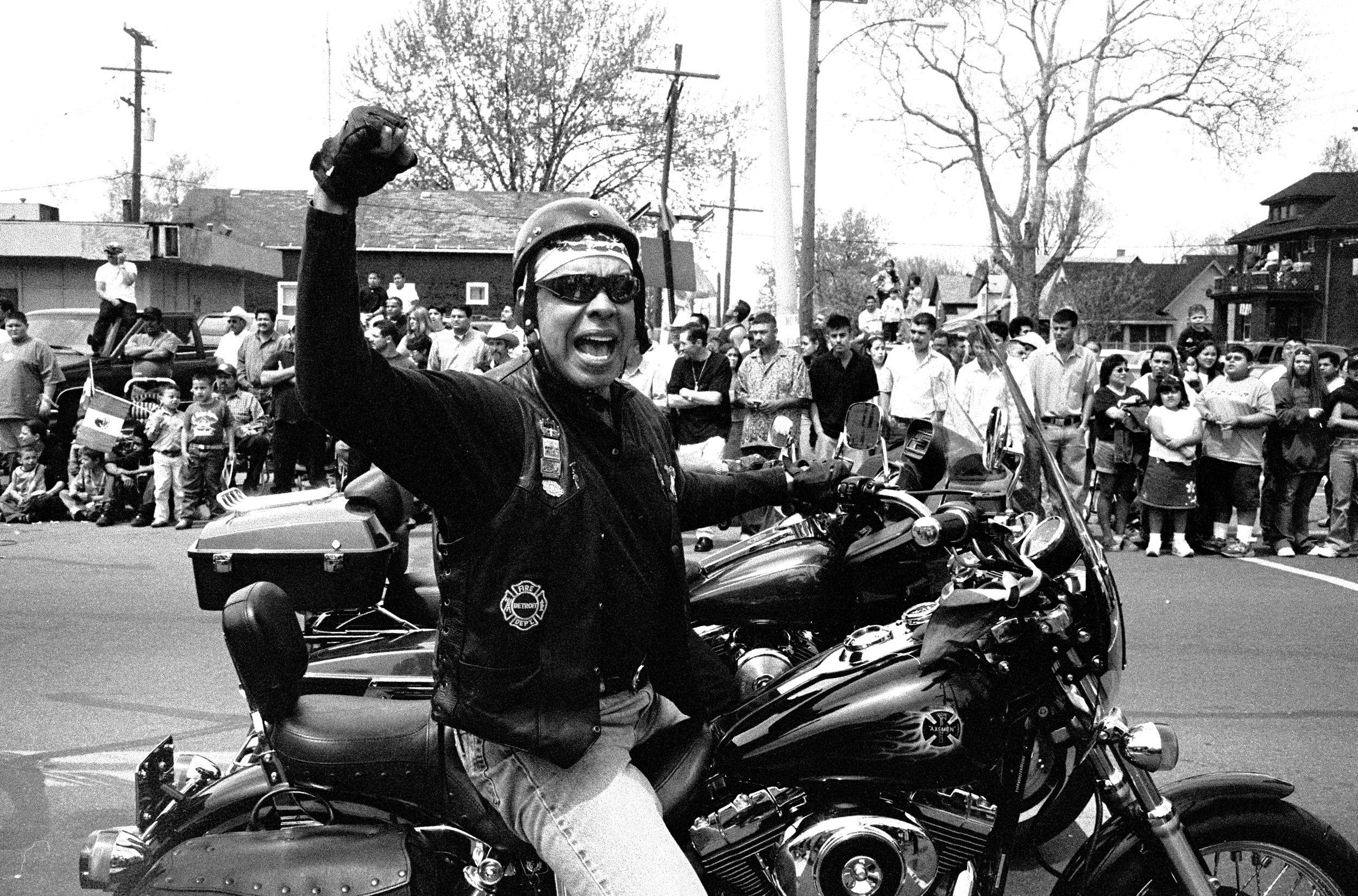
2004 Corktown St. Patrick’s Day Parade
A tradition since 1958, the Corktown St. Parade, taking place unfortunately on a winter Sunday in late February or March each year, was and is the most debaucherous day of the year in Detroit.
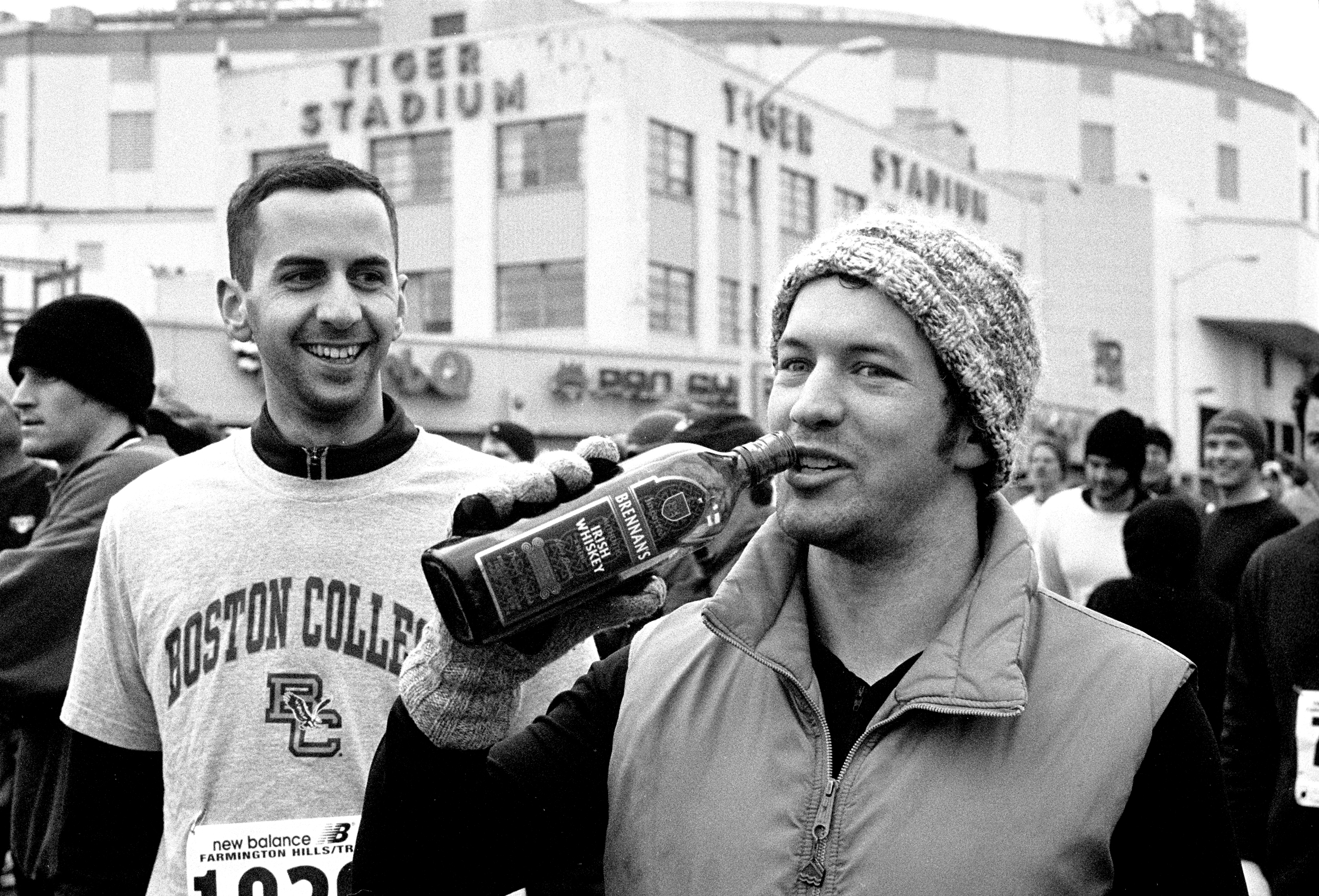

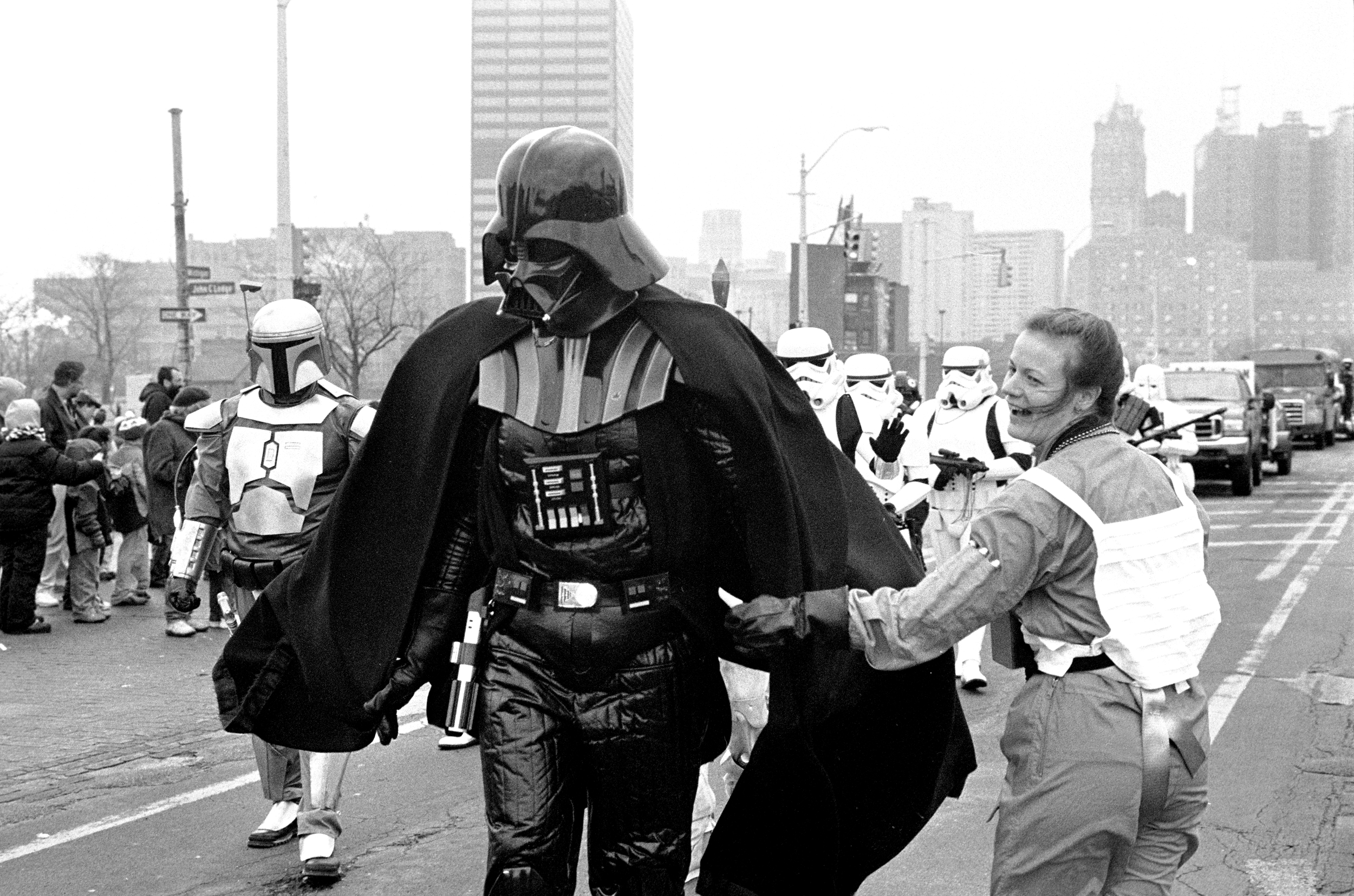
Gallery: Okinawa (2018)
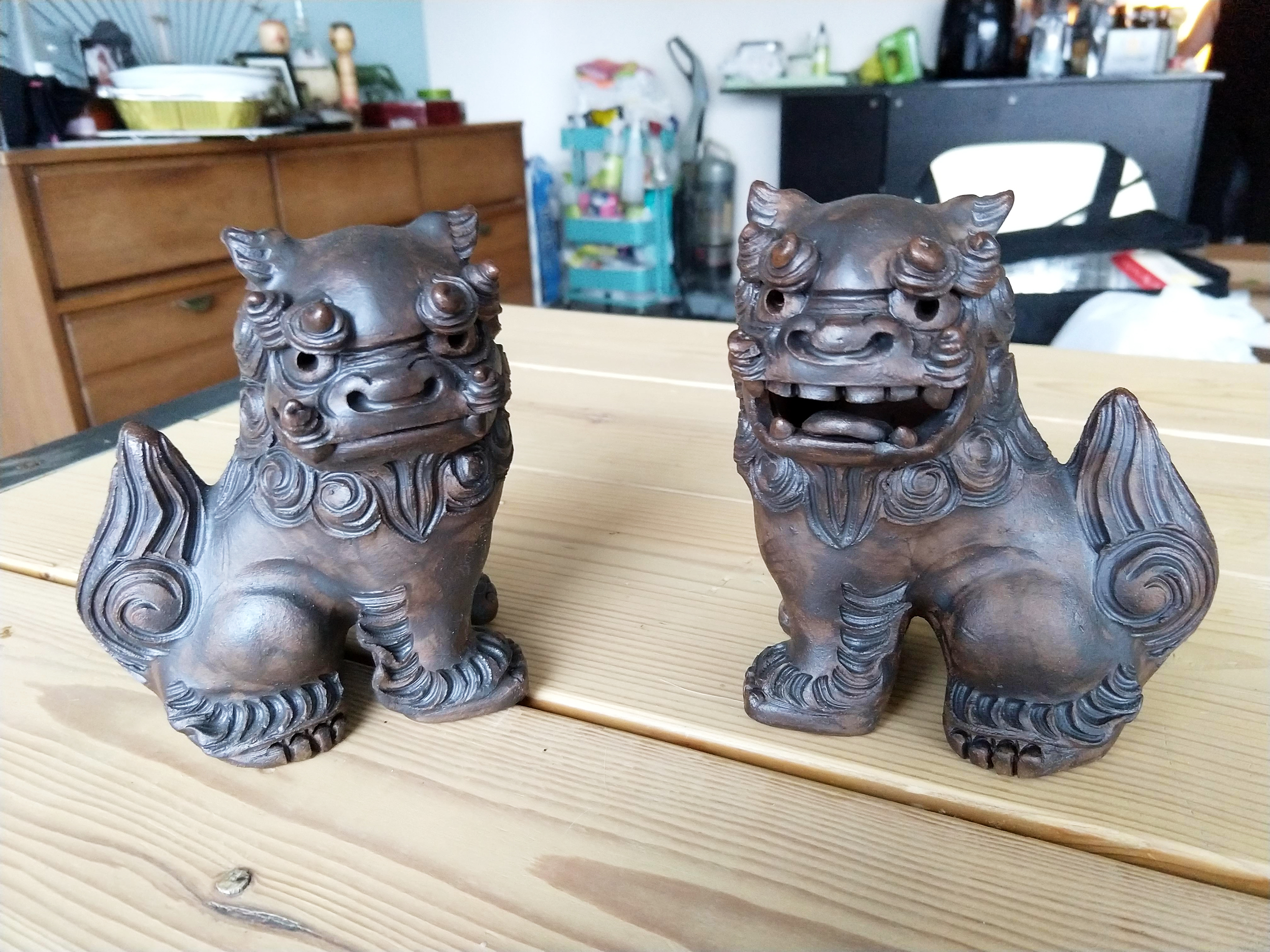
To Americans, “Okinawa” usually conjures images of a fierce two-month battle in 1945 against entrenched and determined forces of Imperial Japan. The battle killed half of the native Okinawans, nearly 150,000 of a pre-war population of approximately 300,000. The fighting and bombing destroyed virtually every building, historical site, and record. A little-known fact is that the United States annexed Okinawa after the battle, installing a military government that lasted until a 1972 democratic referendum that voted for reunification with Japan. Okinawa still houses large, sprawling military bases for both forces of the United States and Japan.
Although an integral part of Japan today, Okinawa was not traditionally part of it. In fact, the islands were known as “Ryukyu” to the Chinese as early as the 8th century ACE. “Okinawa” is the Japanese term. Sitting in an archipelago stretching to Japan to the north and Taiwan to the southwest, Okinawa operated an semi-independent kingdom throughout what the West considers to be the Middle Ages.
Before the 17th century, Okinawa existed as an independent kingdom and nominal “vassal state” of the Kingdom of China. However, China only imposed tribute and loyalty obligations on their vassal states. Although Okinawa had its own language and indigenous culture, like most other neighboring peoples, Chinese cultural influence was dominant. During this period, Okinawa enjoyed some success and autonomy by acting as sort of a “neutral” trading ground among the kingdoms of China, Korea, and Japan.
In 1609, the Japanese Shogunate invaded and conquered Okinawa. Henceforth, Okinawa operated as both a kind of vassal state of both China and Japan. As the story goes, because Japan outlawed civilian weapon ownership, Okinawans subsequently invented a martial art known as “karate.” In 1879, Meiji Japan formally annexed Okinawa. However, despite pressure by the Japanese at this time to assimilate the Okinawans and suppress local language and customs, encourage them to adopt Japanese versions of their name, and to conscript them into the military, Okinawans retained a strong independent identity, even up through the 1945 battle.
Because of the significant need for laborers for the sugar and pineapple plantations, the Kingdom of Hawai’i imported a large number of Japanese, Chinese, Korean, and Filipinos laborers during the late 19th century. However, the international conglomerates running Hawai’i agriculture treated Asian laborers little better than slaves. “Pidgin,” which still can be heard in Hawai’i, was a dialect developed by Asian and native Hawai’ian laborers combining words from multiple languages to communicate with each other and with their overlords. In a little-known, but impressive, act, after the United States formally annexed Hawai’i in 1898, the Hawai’i Organic Act was passed in 1900, which invalidated the oppressive labor contracts imposed upon immigrant and native laborers and forced renegotiation of their terms. Also around 1900, significant numbers of Okinawans began moving to Hawai’i to take advantage of the booming opportunities in agriculture. However, in 1924, the United States halted further East Asian immigration. Americans of Okinawan descent served with distinction with many military units throughout the war.
To this day, because of the late 19th and early 20th century immigration, Hawai’i and Okinawa share a strong cultural connection. In fact, in the aftermath of the 1945 battle, Hawai’ians organized a humanitarian relief effort to aid the local population. In Okinawa today, you can see people wearing Hawai’ian shirts. More info on the history of the deep bonds between Okinawa and Hawai’i can be found here.
In 1945, the United States, obviously knowing very little about Okinawa, did not appreciate the fact that many Okinawans still regarded the Japanese as outsiders and colonizers. As a result, the battle was unnecessarily vicious and destructive. The United States surrounded the isolated island with a large armada. And for two months, the military destroyed everything on the island.
After the war, the United States occupied and annexed the island. Throughout the 1950s and 1960s, Okinawans, resenting the large military presence, starting demanding an end to the occupation. Resentment only grew with the United States using Okinawa as a staging ground for the bombing of Vietnam. The protests ultimately culminated in a referendum in 1972 which ended American military rule and reunited the island with Japan. However, the militaries of United States and Japan continue to occupy a significant portion of the main island. Given their resentment at the occasional serious crimes committed by military personnel, and their desire not to be a military target again in a future war, most Okinawans still wish to see the departure of all military personnel from the island.
After reunification, Japan poured a significant amount of resources into the island. Today, the population of Okinawa is about 1.4 million people, five times its pre-war population. The cities, nestled in the valleys between principal hills, are densely populated, with gridlock traffic during the work day. Small farms dot the landscape in between the cities and hillsides.
The 1945 battle pretty much erased much of the physical evidence of Okinawa’s history, destroying its cities, its unique family tombs that had been carved into hillsides, its palace, and its historical and government records. What did survive, in part, were some of its stone hilltop 14th and 15th century “Gusukus” (meaning “castle” or “fortress” to some, “holy place” to others, depending on how one interprets Chinese characters). Although many of the gusukus were damaged by military shelling and bombing during the battle (as the Japanese used many of them as artillery positions), significant post-war efforts have restored many of them.
Here are some touristy travel shots were taken with a Konica TC-X with my Dad’s old 35/2.8 Hexanon (borrowed from my brother). I liked this lens so much that after this trip I located and purchased the 35/2 Hexanon. The color photos were taken with a Fuji X20 digital camera.
The Gusukus
During the 14th and 15th centuries, Okinawa was divided into several smaller principalities. During this period, local leaders built large stone castles on hilltops overlooking the sea and the land below. The ruins of the gusukus dominate the landscape of Okinawa from north to south. Scholarship has revealed that even after these installations fell into disrepair with the Shogunate invasion, local religious rites were carried out on the ruins of these sites. Apparently, both ancient Roman and Ottoman currency have been found at these sites — a testament to Okinawa’s importance as a center of trade and cultural exchange.
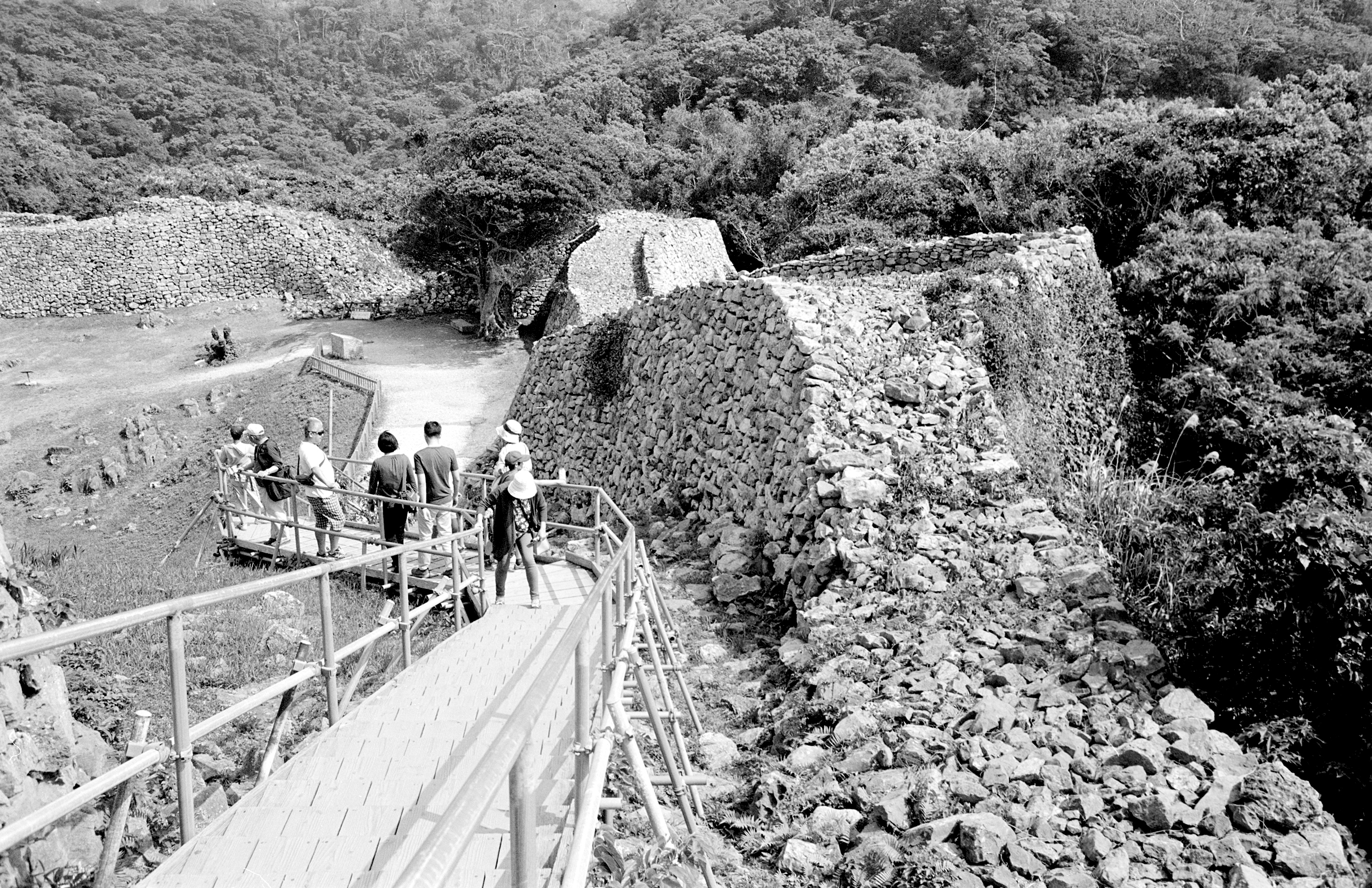







Shuri Castle
This 14th century edifice was completely destroyed during 1945. Since the unification of the Ryukyu Kingdom, it was its political, economic, and cultural hub. Built on a commanding hill, its architecture is distinctly Chinese. In the 1920s, a Japanese architect assisted in the castle’s restoration, and it was declared a “national treasure.” In 1945, shelling from the battleship U.S.S. Mississippi destroyed all of palace buildings. Starting in 1992, Shuri Castle was reconstructed according to old plans and photos. It is pretty magnificent.


“Turtle Back” Tombs
An ancient Okinawan tradition included establishing an extended family tomb in the side of a hill. These tombs are scattered throughout the island. The space doubled as an area to pay respects to one’s ancestors. Many of these tombs were obliterated during 1945, with some being rebuilt after the war. Okinawans tell heartbreaking tales of families hiding out in the tombs during the bombing of the island. However, the tradition remains alive as “new” traditional tombs are still being built today.
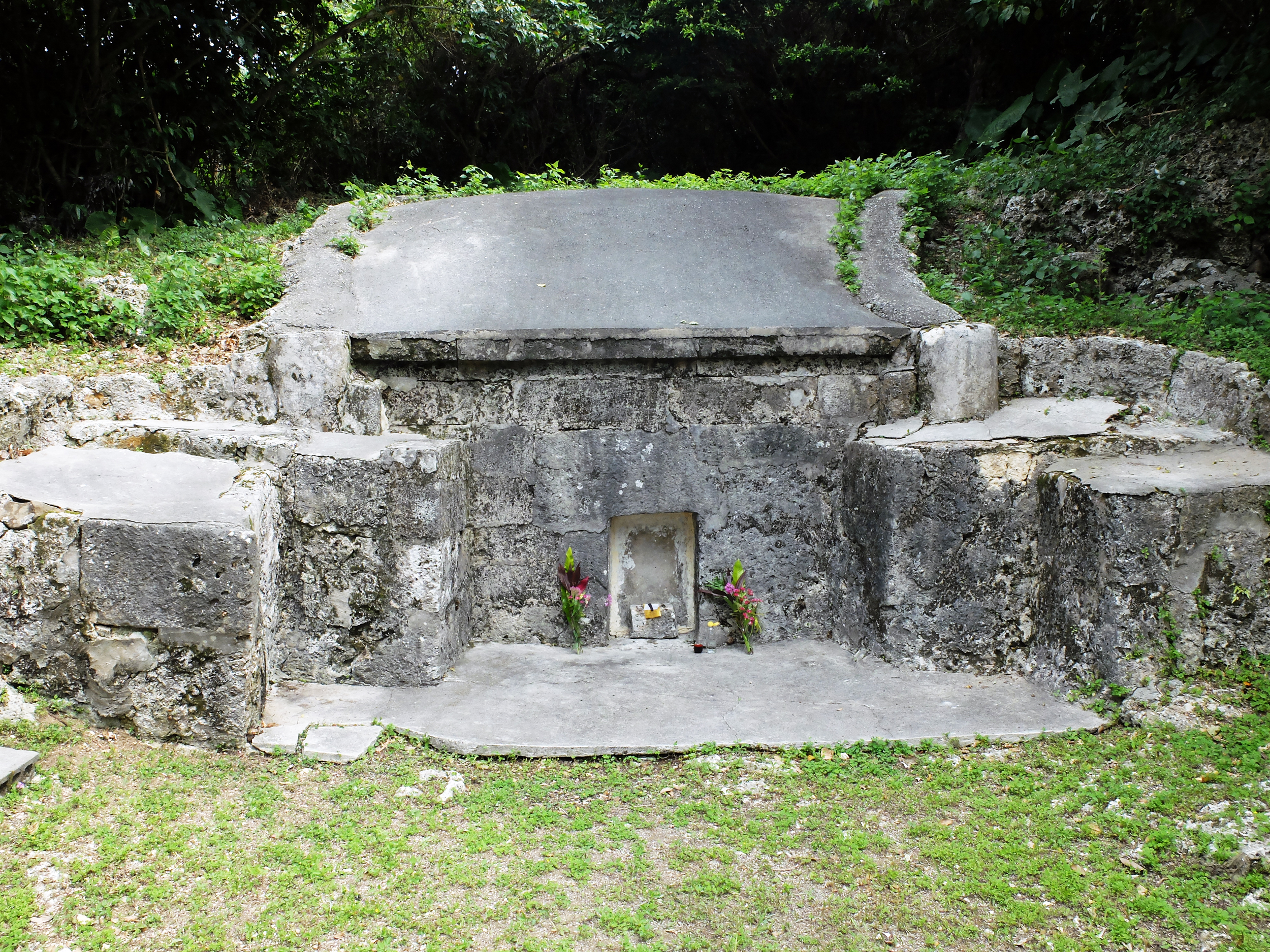
World War II Stuff
Unfortunately, the 1945 battle imprinted a lasting mark on both the people and physical landscape of the island. Around the time of reunification with Japan in 1972, Okinawa began construction of its “Peace Memorial Park” on the southern part of the island where the Japanese made their last stand and where General Mitsuri Ushijima, who led what many military historians consider a skillful defense of the island given the massive inferiority of his forces, committed suicide when the battle was lost.
The Peace Memorial Park contains freestanding monuments listing by name the roughly 240,000 people who died in the battle — Okinawans, Japanese, Koreans, and the Allied Forces. The Koreans who fought with the Japanese have their own monument. While there, we witnessed Japanese naval personnel visiting the Park.
Small portions of the intricate series of tunnels dug by the Imperial Japanese Army are open for view. In these tunnels, one gets the sense of the desperation and futility of the fight. Besides the military conflagration, the ultimate tragedy were the deaths of so many Okinawans, pressed into service by the army to fight a hopeless battle.






